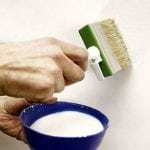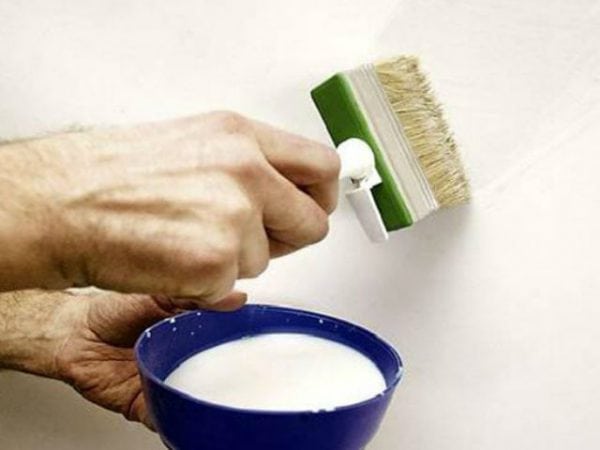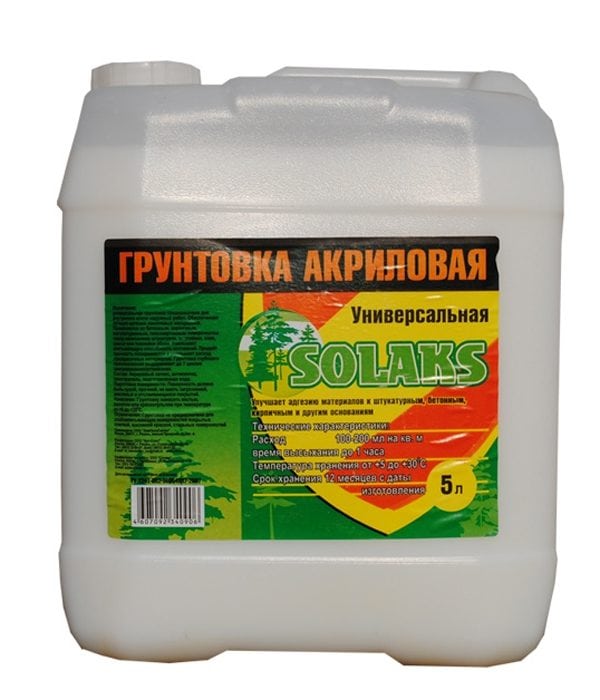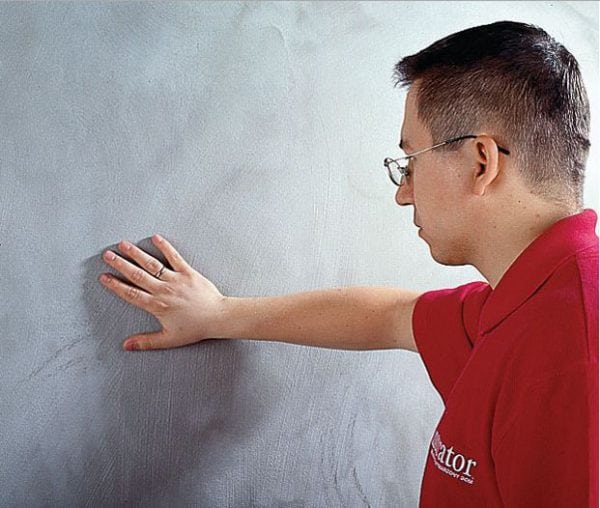Before answering the question, how many hours does the primer dry after processing the walls, several points must be taken into account. The solution dries differently, depending on the composition and climatic conditions of the room. Sometimes the type of material on the surface to be treated may affect the speed. Priming is a necessary stage of intermediate construction and finishing works. The following material lays on the primed surface much better than on the non-impregnated one.
- The composition of the primers and the period of their setting
- What affects the setting rate of impregnation

Typically, the full drying time is indicated in the technical specifications of a particular product. It also contains information under what conditions this should occur:
- whether it is necessary to ventilate the room or, conversely, it is necessary to protect the room from drafts;
- Is it possible to use technical devices to speed up the process, or are natural environmental conditions required;
- what should be the operating temperature and humidity in the room.
Subsequent work can only be started after it has completely dried. However, some materials provide the opportunity to proceed to the next stage of wall decoration just a few hours after applying the primer.
to contents ↑Drying time is very important. After all, if the requirements are not met, this can significantly reduce the properties of materials and affect the quality of the finish. What primers in composition are used for walls, and what is their drying time, we’ll talk about this.
The composition of the primers and the period of their setting
Let's try to answer the question, how much does the primer material dry on the walls, through the features of the composition of the mixture.
- Acrylic deep penetrating primers. Used to enhance the strength of the base of the walls of mineral materials. The liquid penetrates deep into several millimeters, and after polymerization forms a very strong coating with good adhesive properties. How much does this impregnation dry? Sometimes for half a day. But experts advise to withstand at least a day.
- "Contact" primers, they are also called quartz. They contain particles of quartz dust, which enhances the protective properties of the material. Also belong to the category of deep penetrating. How much does it dry? Depends on the number of layers applied: from 1 hour to 6.
- Mineral-based primers are well absorbed into the substrate and quickly set. They are used for initial quick roughing of stone-concrete and brick walls.
- Alkyd primers are used for wood and metal. One of the important properties is rust protection. Often used as paint on metal surfaces. How much to wait? Half a day, no less.
- Quick-drying: drying in a few minutes. If multilayer processing is performed - 4 hours, maximum 6.
- Shellac based on alcohol-containing solvents are more often used for wood processing. The volatility of the solvent accelerates the setting process of the solution.But it is better to wait the night, and do further work (painting, glueing, plastering) in the morning.
- The oil primer mixture dries after application for a long time: half a day, or even all day.
- It will take a long time to wait until the water-based impregnation dries out. Under normal conditions, water does not differ in evaporation rate, so water-soluble primer mixtures, although they are odorless, but how much they dry!
By the way, some types of primers are used as paint. They already contain pigment or you can apply tinting. Such materials are most in demand for temporary painting (protection) of metal structures and for enhancing the color saturation of the finish coating.
A more accurate drying time can be found in the instructions. Or withstand the maximum, so for sure. Before you start working with putty, glue wallpaper or paint, gently touch your hand. Ready for further work, the surface of the walls should be dry to the touch, not stick, not differ in temperature from unprimed surfaces.
What affects the setting rate of impregnation
As mentioned, the process of polymerization and uniformity of setting can be affected by a change in temperature in the room, the presence of drafts or imparting "acceleration". So in warm rooms with an air temperature of more than + 25 °, the impregnation dries quickly enough. It should also take into account air humidity, because at rates above 65%, this process will last two, or even three times longer.
Drying time also depends on what further finishing work the impregnation was carried out.
- Before gluing the wallpaper, the primer should dry thoroughly.
- Before puttying or plastering the walls, you should also wait for the primer to completely dry. Otherwise, the solution lays poorly, and after a while it will begin to exfoliate.
- But on the putty and on the plaster, the waiting time may depend on both environmental conditions and the composition of the material. On cement-sand plaster, under good conditions, the impregnation will dry in 2-3 hours, while it is not necessary to wait for the final setting. On cement-lime will take 4-6 hours. The primer mixes on the putty well and is quickly absorbed. Nevertheless, experts do not advise rushing with further actions: wait a maximum of half a day.
- If you intend to paint the primed surface, then the following should be considered. Fresh paint will not cause peeling of the old coating, if the surface is primed and allowed to dry. You can also paint the plastered walls, here, too, will require priming in several layers. And each subsequent layer is applied only after the previous one has completely dried. On the primed surface, the paint lays well, without streaks. In addition, it reduces the consumption of finishing paint materials.
In any case, before using this or that building and finishing materials, it is necessary to carefully study the technical characteristics and permissible conditions of use. The answer to the question of how long to wait for the impregnation to dry out depends on many factors. And we tried to cover most of them.






